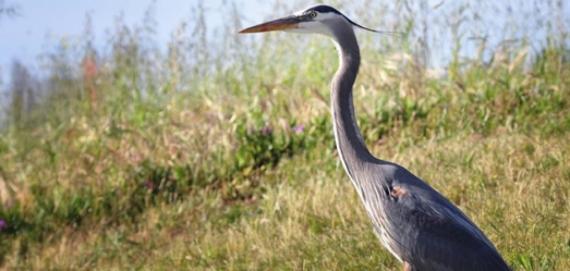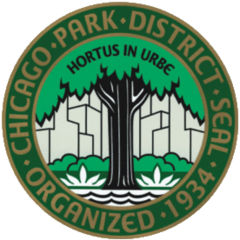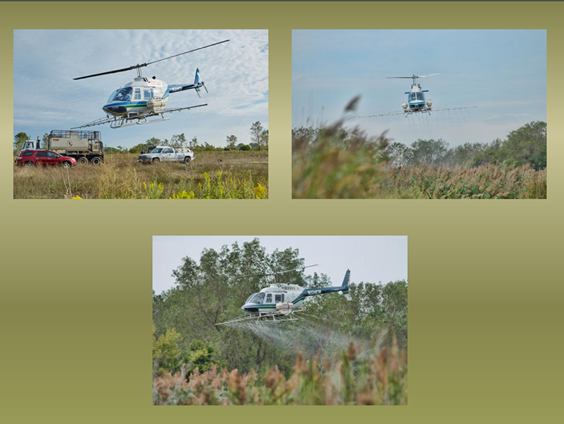
Big Marsh Restoration in Chicago
Author: Hal Terry, Great Lakes Commission
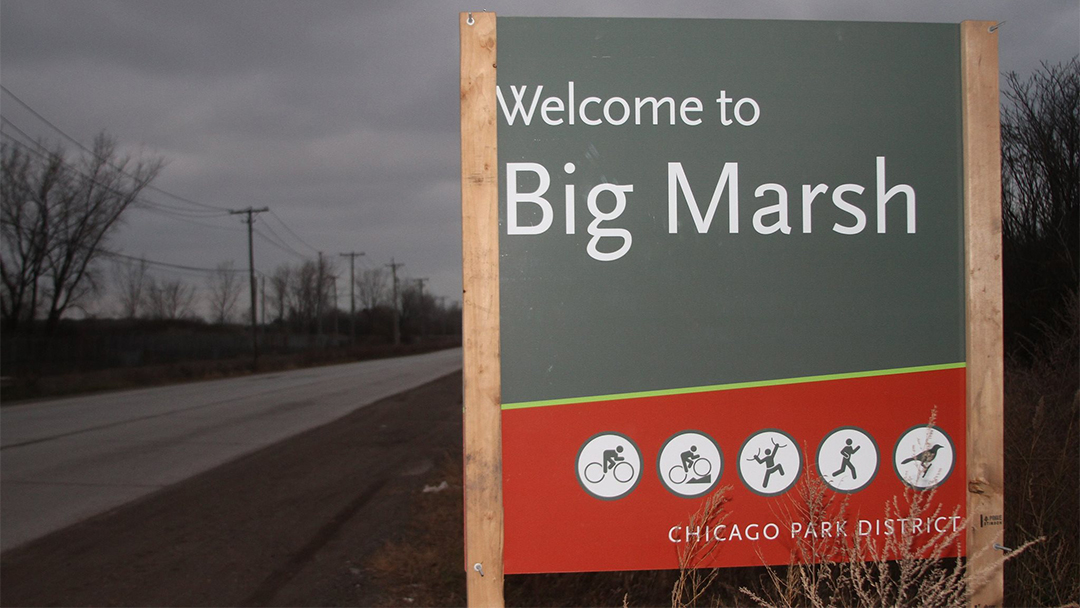
Background
Big Marsh is a wetland located in southeast Chicago. A part of the Calumet greater network of wetlands, this marsh was once home to hemimarsh, which provided essential habitat to the wildlife in this area. Big Marsh is home to black-crowned night heron, whose rookeries were first discovered in 1985. However, in 1999, water levels rose, and these birds left this habitat. This was a result of being located near other drainage sites, which also removed wetlands from Big Marsh. However, native vegetation and water quality have both declined in recent decades. As native wildlife disappeared, invasive species began to take over the area.
Previous history of the site includes the usage of it as a dump site. Another consequence of being in a heavily industrialized city can be seen in its proximity to railroads and factories. It was during this time that the wetland was filled with the steel industry’s slag, reaching depths up to 15 feet and taking up 88 acres of the 300 acres in the area.
In 2011, the Chicago Park District gained ownership of this land. When the district received this land, it consisted of open water, wetlands, and exposed slag. Soon afterwards, a restoration plan was put together for 190 acres of the marsh. This restoration plan included the alteration of hydrology, removal of invasive species, and reintroduction of native plants.
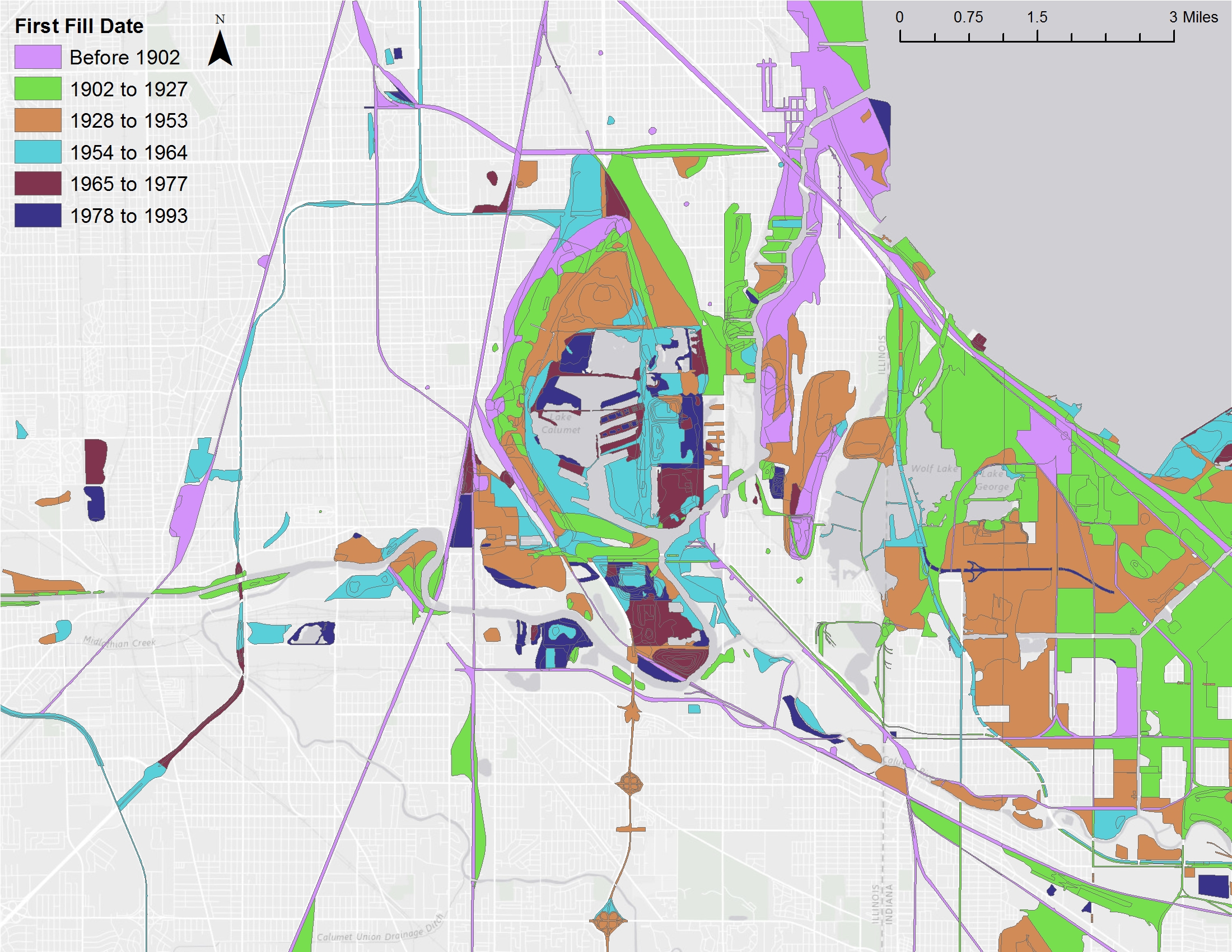
History of Industrial Filling in the Calumet Region
Partnerships and Administration
The Calumet Wetland Working Group, formed in 2015, aims to restore the various wetlands that are located throughout the city of Chicago. The Calumet Wetland Working Group consists of major stakeholders in the area: Audubon Great Lakes, The Chicago Park District, the Illinois Department of Natural Resources, the Nature Conservancy, and the US Fish and Wildlife Service.
Funding was received through the Coastal Zone Management Act by NOAA’s Office for Coastal Management in collaboration with the Illinois Department of Natural Resources’ Coastal Management Program.
Management Objectives
In the past few decades, invasive species of Phragmites has dominated the marsh, leading to a decrease in native plant life. With this decrease also came a decline in local birds, who require native plants to for nesting and foraging. Conversely, the diversity of these birds also serves as an indicator for the wetlands’ health. Through the restoration of these wetlands, there can be an increase in the diversity of animals that occupy this land. For example, with the reintroduction of native plant life, a more diverse bird population has an opportunity to return and nest in this area
The goals of this restoration include:
- Establish regular water, habitat, and bird monitoring by 2020
- Adapt site management based on monitoring results by 2020
- Coordinate invasive species control at a regional scale by 2022
- Implement restoration plans across 13 high-priority sites by 2025
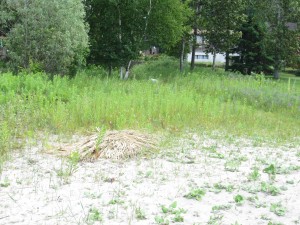
After a selective removal of non-native Phragmites along Wymbolwood Beach, evening primrose is the dominant species on this property. Image courtesy of WBA.
Methods
To accomplish this restoration, different practices were utilized, such as herbicide application, burning, and water level manipulation. Initial treatment began in 2015, where water control structures were installed throughout Big Marsh to manipulate water levels. Herbicide application consisted of the aerial spraying of imazapyr throughout the ecosystem. Following this, controlled burning was completed throughout the entire site in 2016. Since this application, ongoing management has consisted of spraying where needed, in addition to another aerial spray of hemi-marsh areas. Following the removal of Phragmites, CPD planted 5000 tree saplings and 20,000 native grasses and flowers into this area.
This project will also upgrade a poorly functioning water control structure at Big Marsh, the largest individual wetland within Chicago’s Calumet Open Space Reserve. Herons, egrets, and other birds use this wetland. The project will reconnect Hegewisch Marsh, Indian River Marsh, Heron Pond, and Hyde Lake Wetlands into a single water flow management unit, thereby helping prevent floodwater damage to bird rookeries and industrial roadways; lessening habitat fragmentation; and improving the ecosystem function.
Communication and Outreach
Outreach can be found from the Friends of Big Marsh. This organization regularly promotes events occurring at this marsh, such as bike rides and invasive species removal volunteering. In addition to this, a blog is run throughout the year, highlighting news such as volunteers who have helped out at Big Marsh.
Big Marsh is also home to a recently developed bike park. By establishing this area, the Chicago Park District is using Big Marsh as a form of eco-recreation. In addition to this, the Chicago Park District is developing a new environmental center on Big Marsh. The goal of this new center is to show Big Marsh’s cultural and environmental capability. By encouraging people to spend time in nature, the Chicago Park District hopes to highlight the importance of nature throughout local communities.
Big Marsh Bike Park (Friends of Big Marsh)
Monitoring
Restoration is still undergoing at this marsh. In the years since this treatment, there has been a significant shift in the ecosystem. What was once dominated by Phragmites is now home to plants such as milkweed and animals such as the monarch butterfly. To determine if these efforts are successful at restoring biodiversity, monitoring includes the observation of native bird and plant populations.
